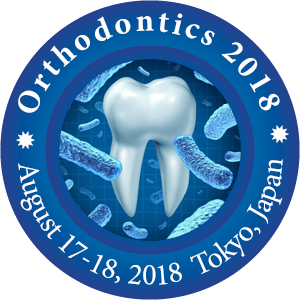
Golmoradizadeh Ali
University of Philippines, Philippines
Title: The effect of ultraviolet photo functionalization on surface and torsional strength of different orthodontic mini implants
Biography
Biography: Golmoradizadeh Ali
Abstract
The mini-implants are an adjunctive device that can be inserted into specific intraoral bony structures to provide anchorage to prevent unwanted tooth movements. The use of mini-implants as temporary anchorage devices has grown to be a valuable component of orthodontic treatment. Mini-implants have expanded treatment possibilities by decreasing dependence on patient compliance, reducing unwanted tooth movements and facilitating previously unattainable or difficult tooth movements. Ultraviolet (UV)-mediated photo functionalization immediately before use, by a combination of UV-A and UV-C for aging the titanium surface, is a recently reported method of surface modification of titanium to increase its biologic capacity. It is characterized by remarkable efficacy, unique mechanisms and a simple delivery method. The present in vitro study was undertaken to investigate the influence of the effect of photo functionalization and its effect on the initial stability. Therefore, the aim of this study was to evaluate the effect of ultraviolet light treatment of titanium or photo functionalization on surface carbon content and on torsional strength of untreated and photo functionalized orthodontic mini implants. Also, to compare the effect of photo functionalization time on torsional strength between untreated and 7 minutes photo functionalized and 15 minutes photo functionalized orthodontic mini implants. The effectiveness of photo functionalization has been proven for all surface topographies tested. The technology does not alter the existing topography, roughness or other morphologic features of the implants and is categorized as neither an additive nor a subtractive method.

